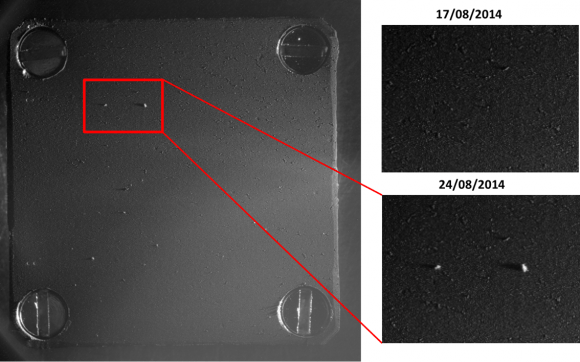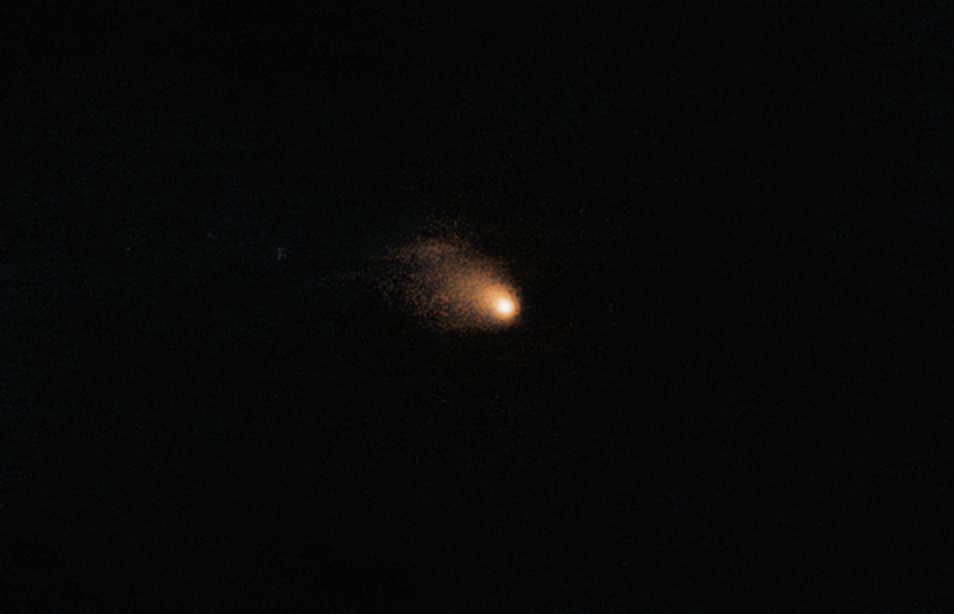This picture shows it is possible to look at Rosetta’s comet from Earth, but what a lot of work it requires! The picture you see above is a composite of 40 separate images taken by the Very Large Telescope (removing the background stars).
Despite the fact that Rosetta is right next to Comet 67P/Churyumov–Gerasimenko, ground-based observatories are still useful because they provide the “big picture” on what the comet looks like and how it is behaving. It’s an observational challenge, however, as the comet is still more than 500 million kilometers (310 million miles) from the Sun and hard to see.
On top of that, the European Space Agency says the comet is sitting in a spot in the sky where it is difficult to see it generally, as the Milky Way’s prominent starry band is just behind. But what can be seen is spectacular.
“Although faint, the comet is clearly active, revealing a dusty coma extending at least 19 000 km [11,800 miles] from the nucleus,” ESA stated. “The comet’s dusty veil is not symmetrical as the dust is swept away from the Sun – located beyond the lower-right corner of the image – to begin forming a tail.”
And that dust is beginning to show up in Rosetta’s grain collector, as you can see below!

BUW/MPE/LPC2E/LCM/FMI/UTU/LISA/UOFC/vH&S
Rosetta’s Cometary Secondary Ion Mass Analyser (COSIMA) picked up several dust grains in August, which you can see in the image, and are now looking at the target plate more closely to figure out more about the dust grains.
“Some will be selected for further analysis: the target plate will be moved to place each chosen grain under an ion gun which will then ablate the grain layer by layer. The material is then analyzed in a secondary ion mass spectrometer to determine its composition,” ESA stated.
All of these results were presented today (Sept. 8) at the European Planetary Science Congress 2014.


How is it then that the Rosetta images are so ‘clean’ (even before processing) and not shrouded in a haze of cometary dust?